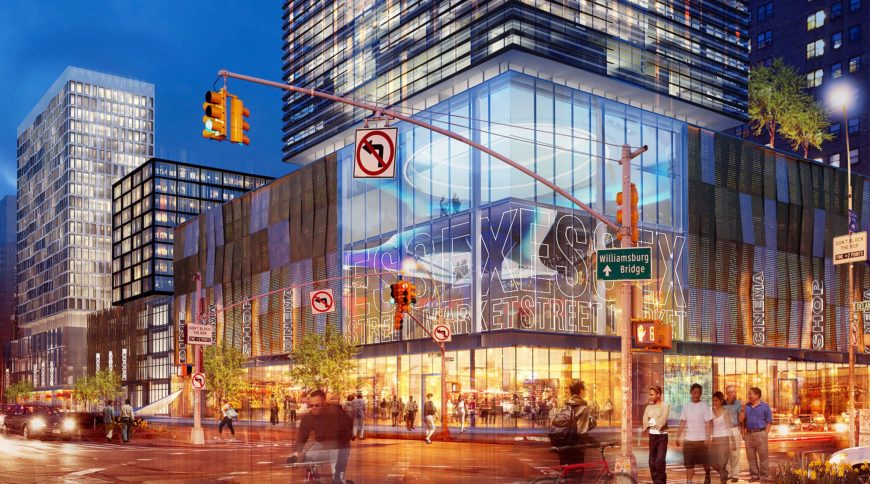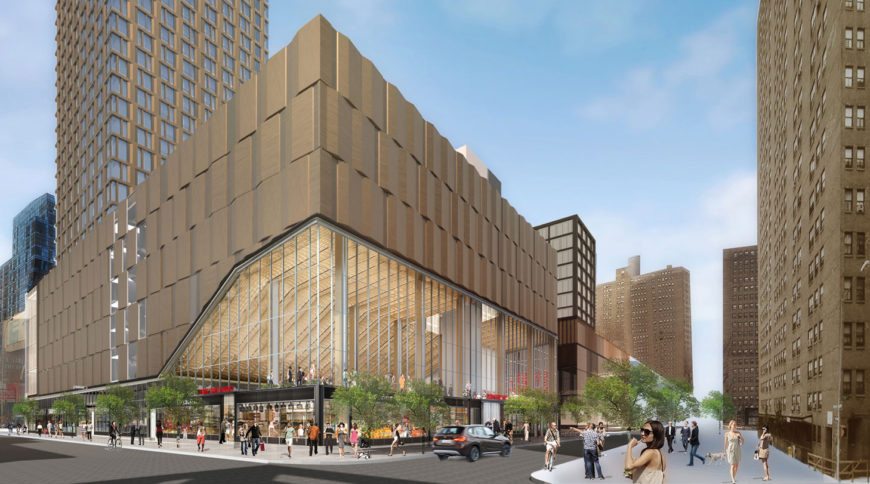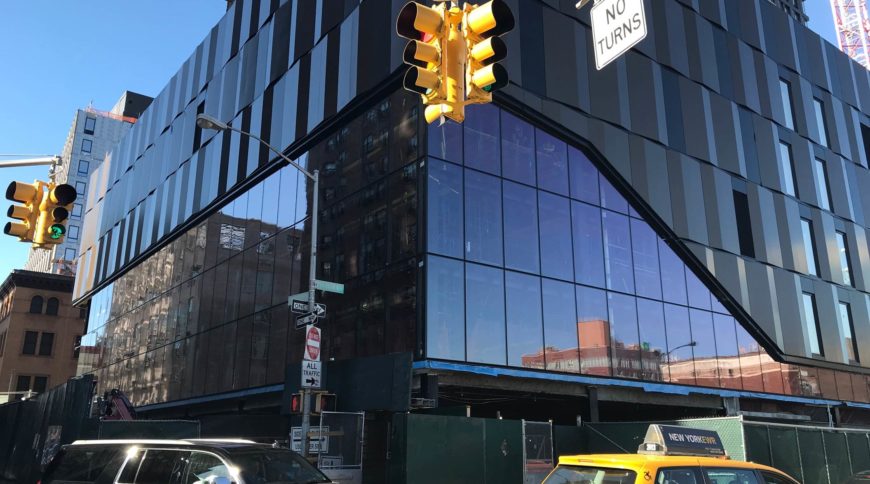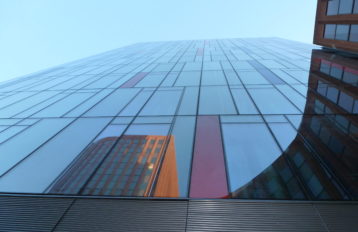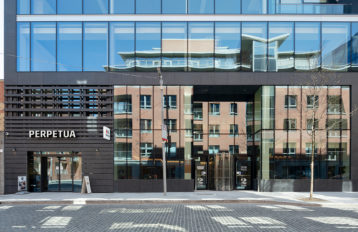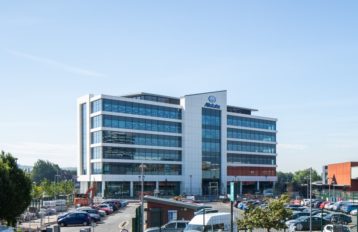The Essex
Location: Manhattan, NYC
Architect: Handel Architects
Summary
When the designer of 115 Delancey Street, part of the £770 million Essex Crossing development in New York City’s Lower East Side, decided to front the whole of the landmark building with a five-storey-high glazed atrium space, it was clear that advanced glazing would be needed to control the climate inside. The expansive area of glazing enclosing the space meant excessive heat build-up, requiring intensive air conditioning, was a big concern for the architect. To combat this, the team specified a cutting-edge solar control glass, featuring a state-of-the-art coating that filters out the high-energy infra-red radiation from sunlight that’s responsible for most of the heating effect. When it comes to designing buildings that look open and inviting to passers-by, there is nothing better than a fully glazed exterior. However, any building in which this is the case will suffer from the risk of overheating on days when lots of energy is streaming through the glass in the form of sunlight. That’s where solar-control glazing comes in. Using advanced coatings to filter out the heat from the sunlight can cut its warming effect drastically. In the case of 115 Delancey Street, the glass helps to prevent 60 percent of the heat from the sun pass through the glass. This will translate directly into energy savings for the scheme’s occupiers in the form of reduced air conditioning and ventilation bills – not to mention greater comfort for anyone inside the building. At the same time, the coatings only reduce the transmission of visible light by 30 per cent, maintaining clear views both into and out of the building as well as a bright and airy interior. This clarity was increased further by specifying a true low-iron glass, which removes the distinct green tint present in all standard float glass, giving a more natural colour balance for anyone looking through the glass. The clarity of the vistas delivered by the glass was enhanced further by using large-format double-glazed units, reducing the proportion of the glazing made up of opaque framing. At 1.4 metres by 3.5m, each unit spans the height of an entire storey of the building, helping to provide uninterrupted sightlines through the glazing onto the surrounding cityscape. To enhance the safety of such sizeable units, the glass was toughened to provide increased resistance to mechanical loads from forces such as the wind, as well as other risks including bomb blasts and manual attack.
Glass
o 6mm 70/40 Optiwhite, Toughened, Arrised Edges
o 14mm Black Warm Edge Spacer Bar - Black Silicon Seal
o 6mm Low Iron, Optiwhite, Toughened, Arrised Edges
o Typical dimensions for standard units 1607mm*3077mm, 1135mm*3194mm
o Typical dimensions for Shaped units 1421mm*3051mm, 1607mm*3194mm
o 420 units for the total project
Details
The Essex Street Market celebrated its 75th birthday in 2016. Three-quarters of a century later, the southernmost warehouse between Broome and Delancey is now completely gone, and in its place a 'glassy' new megaproject designed by Handel Architects. In addition to residential, office and retail space, 115 Delancey Street will feature a 14-screeen cinema and an urban farm on the podium roof. The building is the largest in the wider Essex Crossing megaproject, a new 150,000 square-metre development that includes apartments, a 1,400 square-metre urban park, a new and expanded Essex Street Market, a wide range of retail units and 26,000 square metres of office space.
Awards
Multi Housing 2020 Awards - Best Mixed-Use Project
